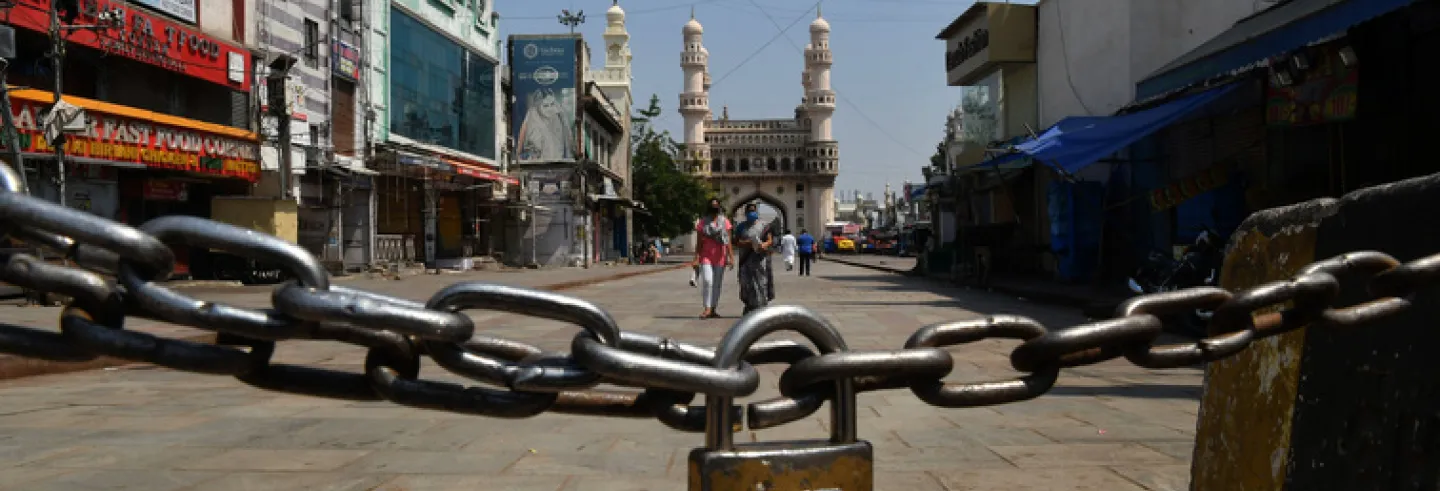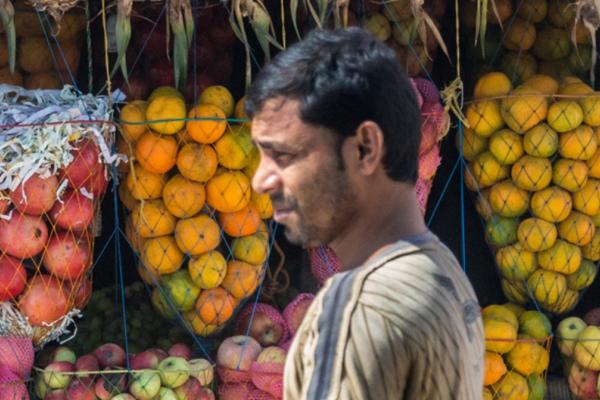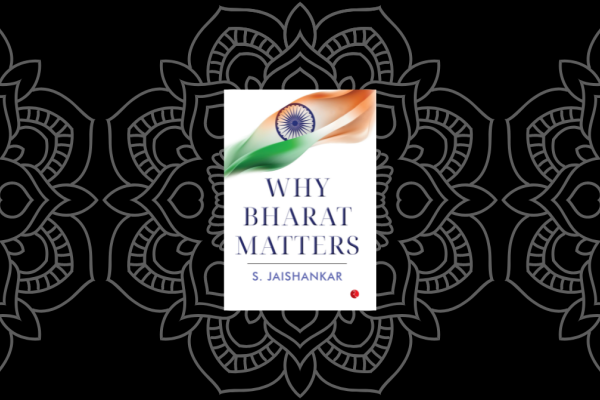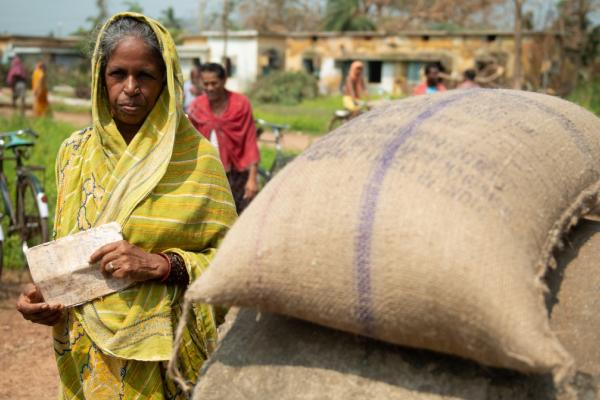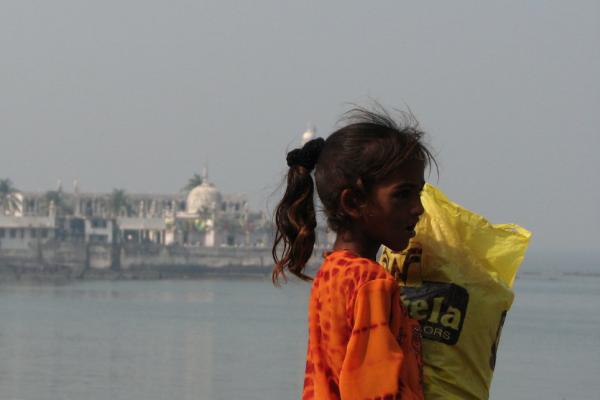On March 24, 2020, the Government of India ordered a nationwide lockdown for 21 days as a preventive measure against the spread of the coronavirus. The lockdown — in full force as we write — restricts 1.3 billion people from leaving their homes. Transport services are suspended, educational institutions are closed, and factories are shut down.
This is in line with the measures imposed in most European countries and in the United States, but the sheer scale of the measure — as in the case of most policies in India — is intimidating. Add to this the grim truth of Indian occupational structure and poverty, and you would likely predict what we now see: unending streams of migrants trying to find their way home, the fear of loss of all income, deep privations, and even (in the space of days) hunger, starvation and death.
The Indian experience highlights, in a visceral way, both the Scylla of widespread viral infection and the Charybdis of socio-economic lockdown.
The Indian experience highlights, in a visceral way, both the Scylla of widespread viral infection and the Charybdis of socio-economic lockdown. It is not a choice between lives on the one hand and loss of economic production on the other. Because India is so poor and because her occupational structure so un-amenable to being shifted online, it is a question of lives versus lives: the nightmarish culmination of all those philosophical trolley problems that we so wish were innocently confined to the classroom.
We want to be explicit about this ethical approach: lives versus lives.
One view — implicit, for instance, in arguments made in certain quarters in the US — is that there must be some allowable tradeoff between economic well-being and human lives. We do not subscribe to that view, and entertain no such tradeoff. Therefore, our first choice in the fight against Covid-19 would be for governments to implement a comprehensive general lockdown, provided that this is accompanied by comprehensive State support for compensating welfare measures aimed at protecting the health, nutrition, and psychological well-being of all households. Many have called for such measures. But calling for them is one thing, and implementing them another. What if the State is unable or unwilling to provide that support to all families under lockdown? Then households are exposed to the profound morbidity and mortality risks that stem from the loss of incomes and jobs, not to mention their constricted freedom of mobility, heightened psychological stress, enhanced prospects of domestic violence, and indeed, perhaps greater vulnerability to the virus itself. What then?
Vulnerability to Lockdown
The vulnerability of the population — especially the poor — to a generalised lockdown is accentuated in India by three specific structural features of the population.
The first has to do with occupational configurations. The latest report based on the Periodic Labour Force Survey is instructive in this regard (National Statistical Office, 2019). Over 2017-18, about 52% of rural households received their main income from self-employment. The share of rural households with a major source of income from casual labor was 25%. Regular wage/salary earners accounted for 12.7% of rural households. For observers in developed countries, the corresponding figures for urban India's households are less surreal — 32.4%, 11.8% and 41.4% respectively — though it is worth bearing in mind that close to two-thirds of India's population is rural. Many of these self-employed rural households are marginal cultivators or small artisans.
In the urban areas, many are engaged in running local shops, small businesses or in minor intermediation activities. It would therefore be very conservative to treat only the casual labour category of households as especially vulnerable. Even if we did, then a simple combination of the numbers above would reveal that casual households alone account for over 20% of all Indian households. We are thus speaking of at least a fifth of the household population that is particularly fragile in its ability to cope with an indefinitely imposed economic lockdown, and most likely many more than that. This heightened vulnerability is, of course, common in all poor countries, but it is particularly worrisome in a society of 1.3 billion people.
The Indian informal sector isn't a sector that can transit to online existence with ease — it can't start holding business dealings on Zoom or provide internet-based services to replace their ongoing activity.
A corollary of this sort of occupational structure is that it is highly “informal”; that is, it belongs to that penumbra of the economy in which transactions are largely outside the fiscal reach of the government, both in terms of taxes (a concern, perhaps, in normal times) and transfers (the overwhelming concern now). Well over half of India's GDP is produced in this informal sector. In contrast, countries in Western Europe have 10-20% of their national output produced in the informal sector (Kelamnson et al, 2019). The Indian informal sector isn't a sector that can transit to online existence with ease — it can't start holding business dealings on Zoom or provide internet-based services to replace their ongoing activity. It is possible that some fraction of them have long-term relationships with other better-placed Indian households, and can rely on them for assistance or a continuation of their economic relationships. We don't have an estimate of how widespread these ties are.
Another correlate of vulnerability is low savings. From a study by one of us in rural Chhattisgharh 1 Authors' calculations using data from Somville and Vandewalle (2015) , we observe that the median household spends Rs. 345 per week on food items alone (this does not include other essentials such as soap or kerosene). That median household has liquid savings of just Rs. 881 only, though. If we divide these savings by the weekly expenditure on food, we see that half the households do not have enough liquid savings to get through a lockdown of 21 days. If we add the value of grain stocks, livestock, and jewelry, the median climbs to Rs. 1,818, but it is still the case that 38% of households do not have the wherewithal to get through a 21-day lockdown. Moreover, such forms of savings are very hard to liquidate under a correlated shock, because the prices of the assets plunge at the same time that they need to be sold.
Reaching the Vulnerable
How might we leverage the existing arms of the State to reach these households? Even for the best-motivated Indian government, this is a tricky proposition. Cash transfers come first and foremost to mind, but transfers to whom? We would need to credibly separate the vulnerable from the protected, the low-income earners from the high. We don't have the income data to implement this separation. (For instance, no more than 3% of Indian citizens pay income taxes.)
In response, one might throw one's hands up and ask for universal transfers. This is related to the Universal Basic Income debates that have recently occurred the world over, India included. The Rangarajan committee's 2014 thresholds ask for Rs. 972 (rural) and Rs. 1407 (urban) per person per month, a number that appears to be pitiably outdated. Nevertheless, with these low estimates, a universal transfer would call for a budget a bit north of Rs. 1.43 trillion. Annual GDP for India is around Rs. 200 trillion, so that comes to over 0.7% of annual GDP per month, a not infeasible but still hefty price tag with bad leverage properties — everybody would need to be paid to avert a crisis for those truly in need. To place the number in context, the Indian government has budgeted 1% of annual GDP under all expenditure headings for the coronavirus crisis - more on this below.
Finally, note that the lockdown will come with significantly lower output — the US has been staring down the barrel of a 25% drop in GDP quarter over quarter. While a universal transfer would still have a progressive component, the associated real transfer would be significantly diminished by the prospects of widespread hoarding, speculation and inflation.
Better, then, to exploit channels that are already self-selected by the poorer public. Options such as India's massive rural employment guarantee scheme (MNREGA), and the public distribution system operating through India's ration shops, come to mind. As Reetika Khera has argued, MNREGA could expand its work guarantees well beyond 100 days per annum, and she has called for 20 days per month during the crisis. India has a buffer stock surplus: now is the time to run that surplus down by increasing rations through the public distribution system (Khera, 2020). These are eminently sensible suggestions, and they take advantage of the self-targeting that's built into these networks.
The relief measures proposed by the Government of India to help its citizens over the initial three-week period of the lockdown have been both delayed and relatively scanty.
As MNREGA is implemented in rural areas only, it has to be suitably complemented in cities in order not to prolong the human tragedy of the first week of the lockdown. Thousands of poor migrant workers have been frustrated by the shut-down of transport facilities and closed state borders in their effort to return to their village homes. Many have been forced to undertake foot journeys of several hundreds of kilometres, with limited cash to hand, and little access to food, water, or shelter. Trekking labourers have been rounded up and locked up in crowded enclosures. In one shocking incident, a contingent of migrants was showered with corrosive disinfectant. Significant reports of deaths are beginning to come in, including the deaths of children. There is little doubt that these will multiply as the coming difficult days go by.
The relief measures proposed by the Government of India to help its citizens over the initial three-week period of the lockdown have been both delayed and relatively scanty. In its “relief package” the Government has allocated just a little under 1% of GDP for corona-related assistance. In addition, some components of the Indian relief package refer to provisions already made in the Union Budget, while others are scarce in relation to their intended purpose. Consider, for instance, the proposed allowance of Rs 500/month/family: the average monthly per person consumption expenditure is itself about two-and-a-half times this amount; and, indeed, even the average per person expenditure of the poorest 20% of the population exceeds the allowance (Subramanian, 2019). The specific purposes for which assistance has been earmarked do not necessarily tally - in terms of either quantum or priority - with painstaking lists which various commentators with specialised knowledge in the field have drawn up (See for instance Dreze, 2020).
Confronting the Trade-off
It is the job of epidemiologists and specialists in infectious disease to warn about the dangers of a virus. The novel coronavirus SARS-CoV-2 belongs to that category of viruses which are highly contagious, and often lethal in their effects. It can (and will) cause many deaths. Because contagion is front and centre in these considerations, social externalities are a matter of first-order importance. It is little wonder that in countries that have enforced a lockdown, the plea to “self-isolate” or engage in “social distancing” — household phrases now — are based more on the implied threat to one's own health, rather than the implied threat to others of one's own actions. These phrases — and the associated priorities of containing the viral spread over all else — have percolated to India. They inform the thought processes that underly India's own lockdown. They inform the general sense of threat and fear that guide India's policymakers. They also inform the terror that appears to swamp the public when faced with a Covid-19-positive individual, or even with health care workers and medical personnel on the front lines of this crisis. Such individuals have been ill-treated in the most demeaning ways.
People are being advised to maintain a distance of six feet from one another in a setting where slum-dwellers and inhabitants of shelters live in cramped and unsanitary conditions.
In India, these effects are particularly palpable because much of the country lives side by side in the closest possible quarters. People are being advised to maintain a distance of six feet from one another in a setting where slum-dwellers and inhabitants of shelters live in cramped and unsanitary conditions. The context, too, is ominous: the requirement of physical distance as a sanitary precaution often translates, in Indian society, to the maintenance and accentuation of hierarchies based on notions of ritual purity and caste- and gender-based disparities. The potential for abuse and maltreatment is enormous. (We hasten to add that the same potentials exist all over the world, but population densities and cultural context can amplify them.)
It is with this background in mind that it is worth taking a second look at the current crisis. We ask you to forget Covid-19 for a second and imagine an incredibly nasty season of the common influenza, one in which (say), half the population is affected in a given year rather than the customary 10-15%. 2 For instance, the Center for Disease Control in the United States estimated that between 37.4 million and 42.9 million people contracted the flu during the 2018-2019 season. Look at this first from the “micro” perspective of an average individual who gets the flu in this particularly virulent year. The conversation between friends and acquaintances can readily be imagined - “oh, it's a terrible season this year, everyone's getting the flu”. It would be unfortunate, but from our average individual's point of view, this is scarcely a cause for panic, even though the flu has a known fatality rate of around 0.1% or perhaps slightly more. Except for the very old, we don't give it the time of day.
Now switch mirrors and consider the same scenario in “macro” perspective. The number of influenza-related deaths in our imaginary scenario would triple. In the United States, for instance, the 2017-2018 flu season was on the high side: according to the Center for Disease Control, an estimated 45 million people came down with influenza, and 61,000 died. Scale this up for our imaginary monster flu year — then 180,000 people would die. The additional 120,000 would place enormous stress on the health system — there would be a shortage of hospital beds and ventilators, or personal protective equipment, and the need for triage would skyrocket. This “macro” nightmare is to be contrasted with the individual or “micro” viewpoint which is no more threatening than getting the flu in a given season.
It is possible to argue, and in fact it has been argued (by one of us (Raay, 2020), among others) that Covid-19 may not be substantially different from our imaginary setting. It is surely far more contagious than the flu, but conditional on being affected, the mortality rate may be not that much higher than that of the flu. However, widespread understanding of this fact by the general public is not in the interests of a social planner. In the hypothetical scenario of a contagious flu, it is just as important (as it is now) to maintain social distancing, to practice self-isolation, and to take all steps to reduce contagion. The strain on overall society would be just as immense. However, all individual actions would need to be taken with society in mind, and not with a sense of great personal threat. That is much harder to implement. As a result, it is far more useful — from a social perspective — to convey the impression that Covid-19 is a highly lethal disease, so that self-preservation can be invoked to implement socially desirable outcomes.
These are understandable strategies from the point of view of an economically advanced country, where the economic fallout from lockdown can (and should) be shouldered without complaint. After all, lives come first. But in the “lives versus lives” setting in which India now finds herself, and given the panic-induced social attitudes that now fester among the public, it is imperative that there should be a more nuanced understanding of these truths; at least on the part of policymakers.
In the absence of a complete, first-best package of social protection — neither a comprehensive lockdown nor a relaxed lockdown is free of ethical complications.
With this in mind, consider again the moral dilemma we come up against when we contemplate alternative approaches to the pandemic — namely, more or less stringent forms of lockdown, with associated packages of transfers in cash or kind. Especially in poor and unequal societies such as India’s, both the lockdown and no-lockdown extremes entail triage. A comprehensive lockdown will differentially assist those whose fall-back options in a time of confinement are better, and those who can afford the pecuniary and spatial luxuries of social distancing. Effectively, the lockdown picks out the non-poor for favourable treatment vis-à-vis the poor.
In a relatively relaxed environment with freer mobility, the virus attack would be more evenly distributed across socio-economic groups. The criterion for differential outcomes under the relaxed alternative is more likely to be age, with the elderly, implicitly, now becoming the prime candidates for adverse selection. In the absence of a complete, first-best package of social protection — neither a comprehensive lockdown nor a relaxed lockdown is free of ethical complications. An uncompromising insistence on a thoroughgoing lockdown under any circumstances is far from being a morally straightforward stance. These complications are heightened when we add the micro and macro considerations described above.
A Possible Compromise for India
In such a time of crisis, it is absolutely necessary (a) to concentrate our effort on policies that are feasible; (b) to avoid measures which are unaffordable for most citizens; (c) to not criminalise individual actions triggered by the need for survival; and (d) to communicate State intent in credible, unambiguous, and specific terms. Against this background, we would like to place the following proposal on the table for critical evaluation. 3 This section repeats, almost verbatim, parts of an article published in Ideas for India by a subset of the present authors: Ray, D. and S. Subramanian. (2020). We are not dogmatic about it. Like every other proposal, this has its limitations; see especially the discussion surrounding item (iv) below.
(i) The micro perspective adopted above, and the accompanying discussion, together suggest that the death rate from Covid-19 for people between 20-40 is significantly lower than the overall death rate for all ages from influenza. Indeed, as can be argued, even the overall mortality rates (averaging over age) could be comparable across the two diseases — though Covid-19 is far more contagious. Therefore, it is possible to cautiously advance the proposition that if it is acceptable for people of all ages to move around freely in the presence of influenza, it should be acceptable to allow (not force) all adults under 40 in India to work freely at the present time. Again, this is not an ideal outcome, but it is a reasonable compromise to work with, and it can be readily monitored (for instance, an Aadhaar card states the year of birth). 4 As in the case of employees still at work in other parts of the world, it is important to keep them informed through public awareness campaigns and to encourage employers to take precautions (e.g. through the provision of hand sanitiser and respecting social distance).
(ii) This measure can—and must—be supplemented by serological testing as such testing becomes widely available, and as antibody stocks in the population build up. This must be seen as being crucial and indispensible. Everyone certified under an antibody test should be permitted to work, in addition to the 20-40 population.
(iii) Later, as the infection rate subsides, new measures can be taken to move “up the age distribution” for work-permits.
(iv) Protection of the elderly must be left (though not entirely) to households, who will possess the incentives and motivation to provide for and monitor such protections. We need to rely on intra-household motivation, where some degree of altruism is to be reasonably hoped for, even expected, as opposed to inter-household altruism, on which it would be foolhardy to repose an equal burden of faith.
(v) Transfer massive funds to the public health system, with an explicit emphasis on the testing, isolating and treatment of older patients. This should be aided by State provisioning of home-site visits by health workers. It should be understood that the core crisis is a public health crisis, and not necessarily an individual one. This appears paradoxical, but in the light of our discussion in the previous section, it should not be.
What is involved is a form of self-selection: people who can afford the luxury of staying at home will do so, while those that cannot, will opt to go to work. As with many self-selection outcomes, this one too is unfortunately mediated by the inherently inequitable prospects confronting our citizens: the labouring poor will exercise the option of working, unlike those with more secure fallback options. But at least the former will not be confronted with the involuntary contingencies of hunger, under-nutrition, and life-threatening economic shortfall.
The immense advantage of this proposal is obvious enough: it allows most Indian families to keep a lifeline open, and in so doing it suggests a measure that is equitable, balanced and usefully implementable. We highlight here two points on which a final evaluation must rest.
1. What guarantees that the elderly will be adequately protected under this policy?
The answer is that there are no guarantees. Intergenerational contact cannot be fully avoided under any policy. Widespread poverty and inequality, both distinctive features of India, constitute a poor environment for realising the anti-disease objectives of a lockdown. The bulk of the population live in cramped conditions with full interpersonal exposure, with large families often confined to a single room.
That said, consider an outright lockdown. No one among the poor can afford to obey it. Barring draconian orders such as shoot-on-sight, shops and small businesses will reopen, with both young and old working. Compare this to a situation in which the young are legally permitted to work. Then the locus of transmission shifts to the household and the family.
Our proposal gets the older individuals out of the direct workforce, and it asks for protective measures primarily within the family, supplemented by State-assistance across families.
How the two loci compare is a matter of debate. We do not have the data to assuredly predict which measure poses the greater transmission risk to the elderly. But here is what we can say. Our proposal gets the older individuals out of the direct workforce, and it asks for protective measures primarily within the family, supplemented by State-assistance across families.
Once again, going by recent reactions in the community to medical personnel and to individuals suspected of having been infected, we would be extremely wary of any steps that rely on the social altruism of private agents across families. There could be feasible, decentralised measures that families could adopt, perhaps with the help of a small cluster of neighboring and friendly families. For instance, there is the option of using two families to reallocate living quarters between old and young. But the entire strategy should rely on small, voluntarily formed groups to internalise externalities. While no measure is ideal, ours relies on the self-interest of households rather than a generalised notion of the social good. Finally, we should also note that in India, the elderly constitute a relatively small fraction of the population. The population of India aged 65 or older is just 5.1% of the total, a figure nearly one-fifth as small as the corresponding number for Italy, which is 23%. 5 Statistics from the Census of India and the World Bank.
2. In any case, young versus old aside, won’t this proposal increase the overall incidence of Covid-19, relative to a comprehensive lockdown?
Alas, it will. The best of all worlds cannot be achieved. The one assured way to minimise the incidence of the disease is to have a complete and fully implemented lockdown. But — given the impossibility of the highlighted phrase in the previous sentence — is that really what we want to do? Must we neglect the immense burden — not merely economic, but in terms of human lives and suffering — that a comprehensive lockdown must place on the majority of the Indian population?
The considerations above must be supplemented by the micro and macro perspectives introduced earlier. The added burden placed on the health system at an aggregative level could coexist with a much smaller burden at the individual or micro level, particularly if it turns out — as some evidence suggests that it might — that fatality rates from the Coronavirus are of the same order of magnitude as the flu. There is certainly a case to be made for massively funding the health system in this time of crisis, while loosening the lockdown in the manner proposed above. In the years to come, this improved health system will be a blessing.
Concluding Observations
Epidemiologists and infectious-disease specialists correctly emphasise the dangers of a lethal virus spread. It is their job to do so. With the prisoner's dilemma that pervades any such situation, it is also their job to warn the public that the personal dangers of an infection are high. 6 For instance, it is not uncommon to make statements that the young could also be lethally affected by Covid-19. Such arguments are often best made by highlighting the absolute numbers of the young that could be affected, especially in highly populated metropolitan areas. But that should not obscure the vision of a broader social ethic. The objective is to save lives on the whole, not just to reduce pandemic deaths.
In some societies with widespread and comprehensive safety nets, the two alternatives in the previous sentence coincide. A lockdown will not kill, especially with a well-articulated and well-targeted strategy of economic compensation. (There could be vociferous objections from business groups, but that's another matter.) But in societies like India, a lockdown can kill: via job loss, increased vulnerability to economic shocks, and via social stigma and misinformation. Then the objective of saving lives as a whole may or may not be achieved by a draconian lockdown.
[T]his is an approach that would — over the long haul — allow the relatively less vulnerable working-age population some latitude in the matter of going to work, in order to minimise the costs of unemployment, starvation, and income-loss.
We've contended here that the problem of which strategy to invoke to combat the pandemic is not only a complicated one, but one which does not necessarily, and always, resolve itself in favor of the option that seems currently to command a considerable measure of international consensus. In the context of a large developing country like India, where both poverty and inequality are ingrained structural features of the economy and society, there may be a case for a relaxed version of the stringent universal lockdown approach. Stated without nuance, this is an approach that would — over the long haul — allow the relatively less vulnerable working-age population some latitude in the matter of going to work, in order to minimise the costs of unemployment, starvation, and income-loss. Responsibility for the welfare of the elderly could be decentralised to the level of individual households, but must also be very robustly shared by the State through an organised, old-age-targeted policy of special care — through testing, quarantining and treatment.
We conclude on a final note of philosophical interest, one in which the political aspect of the problem also acquires a certain salience. The debate of “lockdown versus economy” (crudely put) assumes very different political hues in the “West” and in India.
In Europe and in the United States, one would be inclined to support a lockdown without hesitation, because Covid-19 is highly contagious — much more so than the flu. Even if an individual's risk of mortality is about the same across Covid-19 and the flu (conditional on being infected, that is), the strain on the health system is enormous because Covid-19 is far more contagious. While the economic effects are large — certainly so in a high-inequality, restricted-social-net country like the United States — one has the informational and targeting capacities needed to make people whole: starvation is not first-order. In India, it is first-order. The same progressive support for a lockdown in the “West” may need to be entirely reallocated in a different context. It is in this context that our suggestions are offered — in a genuine spirit of shared enquiry that invites opinion and discussion, and not with assertive confidence or dogmatic certainty.
This article was first published with the same title as the CEPR Policy Insight No 102. It is being reprinted here with permission of the Centre for Economic Policy Research.


